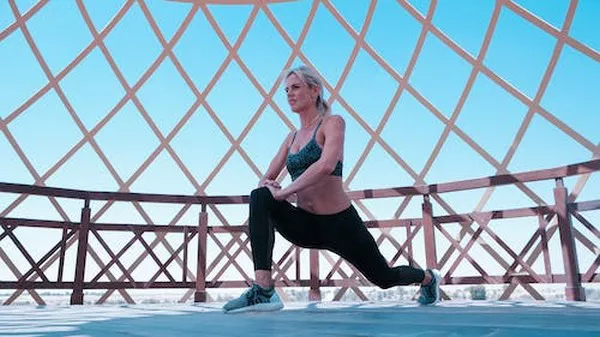Squats have long been considered one of the best exercises for building lower body strength and power. But what about your abs? Can squats help with ab development? The short answer is yes, but let’s dive into the details to understand how and why.
The Anatomy of Squats
To understand how squats can benefit your abs, it’s important to first understand the anatomy of the movement. Squats primarily work the muscles of the legs and glutes, including the quadriceps, hamstrings, and gluteus maximus. However, squats also require stabilization from a number of core muscles, including the rectus abdominis (the “six-pack” muscle), transverse abdominis, and obliques.
During a squat, you begin in a standing position with the weight on your feet. As you lower your body down towards the ground, you activate your quads, hamstrings, and glutes to control the movement. At the same time, you must engage your core muscles to maintain proper form and stability.
As you push back up to a standing position, you continue to work your lower body muscles while also engaging your core to maintain proper alignment and prevent excessive arching of the spine. In this way, squats can be thought of as a full-body exercise that requires strength and coordination from multiple muscle groups.
The Role of Abs in Squats
Now that we understand the role of squats in activating the abs, let’s take a closer look at how each muscle group contributes.
Rectus Abdominis
This muscle runs vertically along the front of your abdomen, and is responsible for flexing your spine and bringing your ribcage closer to your pelvis. During a squat, the rectus abdominis helps to stabilize your spine and keep your torso upright.
Transverse Abdominis
This muscle wraps around your midsection like a corset, providing support and stability for your spine and internal organs. During a squat, the transverse abdominis helps to maintain proper alignment and prevent excessive arching of the lower back.
Obliques
These muscles are located on either side of your rectus abdominis, and are responsible for rotation and lateral flexion of your spine. During a squat, the obliques work to stabilize your torso and prevent twisting or tilting of your pelvis.
Benefits of Squats for Abs
Now that we understand how squats activate and benefit the abs, let’s take a closer look at some of the specific benefits.
Stabilization and Core Strength
As we’ve discussed, squats require coordination and stabilization from multiple muscle groups, including the abs. By incorporating squats into your routine, you can improve overall core strength and stability, which can translate to other exercises and activities.
Improved Posture
Proper posture is essential for maintaining spinal health and preventing injury. Squats require you to maintain a neutral spine position throughout the movement, which can help strengthen the muscles responsible for good posture.
Increased Ab Definition
While squats alone won’t necessarily give you six-pack abs, they can help to improve ab definition by strengthening the muscles that support the core. When combined with a healthy diet and other core-strengthening exercises, squats can be a valuable tool in helping to achieve visible abs.
Variations to Target Abs
While traditional squats can certainly benefit your abs, there are also several variations that can target the muscles even more specifically. Here are a few examples:
Front Squats
This variation places more emphasis on the quads and abs by shifting the weight distribution forward onto the front of the body. To perform a front squat, hold the barbell across the front of your shoulders instead of behind your neck.
Goblet Squats
This variation is great for beginners or those with limited mobility, as it requires less weight and places less stress on the lower back. To perform a goblet squat, hold a kettlebell or dumbbell close to your chest as you squat down.
Overhead Squats
This variation requires more shoulder mobility and core stability, as you hold a barbell overhead while squatting down. To perform an overhead squat, grasp the barbell with a wide grip and press it overhead as you squat down.
Conclusion
Squats are an excellent exercise for building lower body strength and power. However, they can also benefit your abs by requiring stabilization and coordination from multiple core muscles. By incorporating squats into your routine and focusing on proper form and alignment, you can improve overall core strength, posture, and even ab definition. Try variations like front squats, goblet squats, and overhead squats to target the abs even more specifically. Remember to always consult with a fitness professional before beginning any new exercise program.
Related topics:


